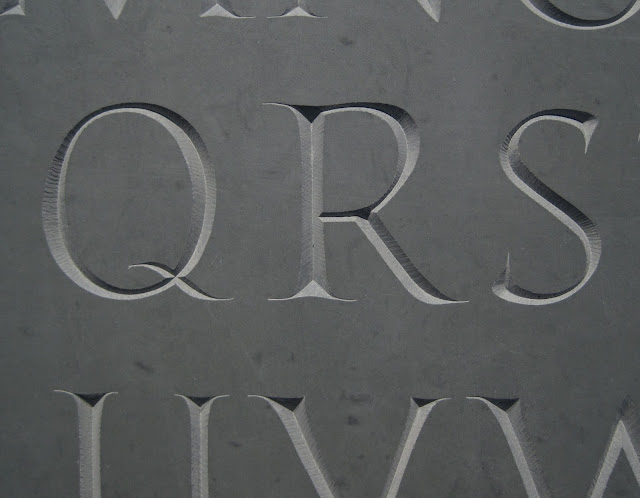I usually make a point of including at least a couple of process
photos with every piece - to explain a bit more about how what
you are seeing came to be. For those who are new to this blog
the letters for this alphabet are not copied from a computer font
or from a type face. They are drawn by hand - and then carved
by hand - with a mallet and chisel. The letter forms are the result
of my immersion in drawing and carving letters for the past 14years.
Traditional Roman letter have a timeless lure - and a timeless
strength. The have captured me - somewhat against my will,
and I come back to them again and again, with new ideas - and
new ways of seeing - knowing they have so much to teach - and me,
so much to learn! |





Great to see someone interested in Romans. Have you read Origin of the Serif by E.M. Catich? Love the polychrome letters.
ReplyDeleteFather Catich for sure - I introduce all my students to him as a must read (or at least a must browse and encourage them to look at all of the letters).
ReplyDeleteGlad you like the letter color choices in the Alphabet. I had a very different plan in the beginning - but once I started mixing paint things went in a very different direction.